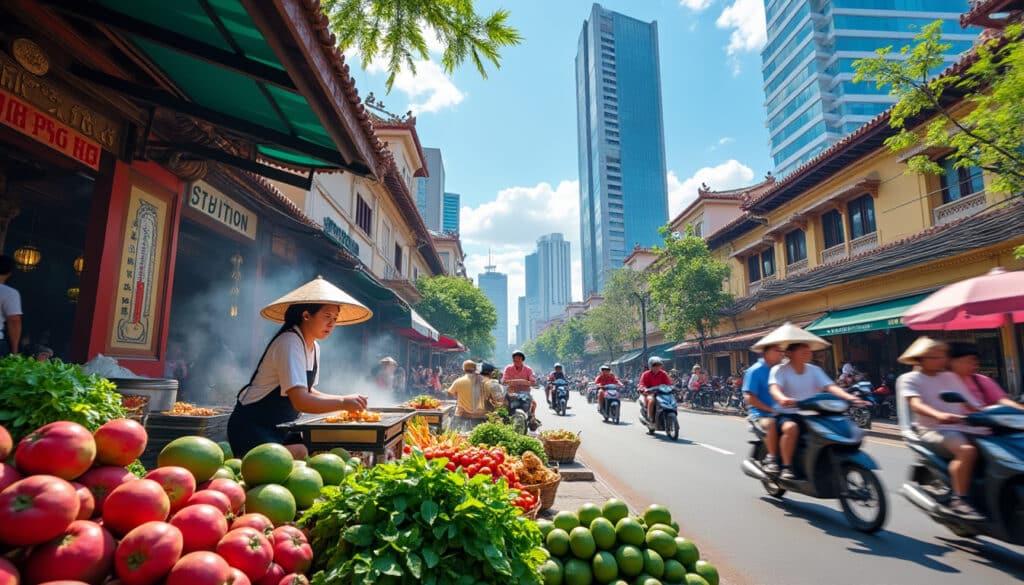Flooding Challenges and Natural Risks in Hanoi
The vibrant city of Hanoi, known for its unique blend of age-old traditions and rapid urban growth, is no stranger to water-related challenges. Nestled along the banks of the Red River, Hanoi experiences frequent flooding due to its geographical location and climate patterns. As the capital city, Hanoi’s flood management practices are crucial not only for its residents but also for the entire country. With a series of heavy rains and tropical storms, the city often finds itself battling against natural disasters that threaten infrastructure and local communities.
Several factors contribute to the flooding challenges in Hanoi. The city’s rapid urban expansion has reduced the amount of natural land that can absorb rainfall, increasing surface runoff and leading to more frequent floods. Additionally, the aging drainage systems struggle to cope with the increased water flow, causing further inundations. Climate change also plays a significant role, bringing more extreme weather patterns with increased rainfall intensity.
Local authorities in Hanoi have been implementing a range of strategies to combat these risks. The development of the Hanoi Water Management initiative aims to improve the city’s water infrastructure and mitigate the impact of heavy rains. Furthermore, there has been a push toward deploying innovative technologies and sustainable practices such as EcoFlood Technologies and RainGuard Systems to create effective flood prevention mechanisms.
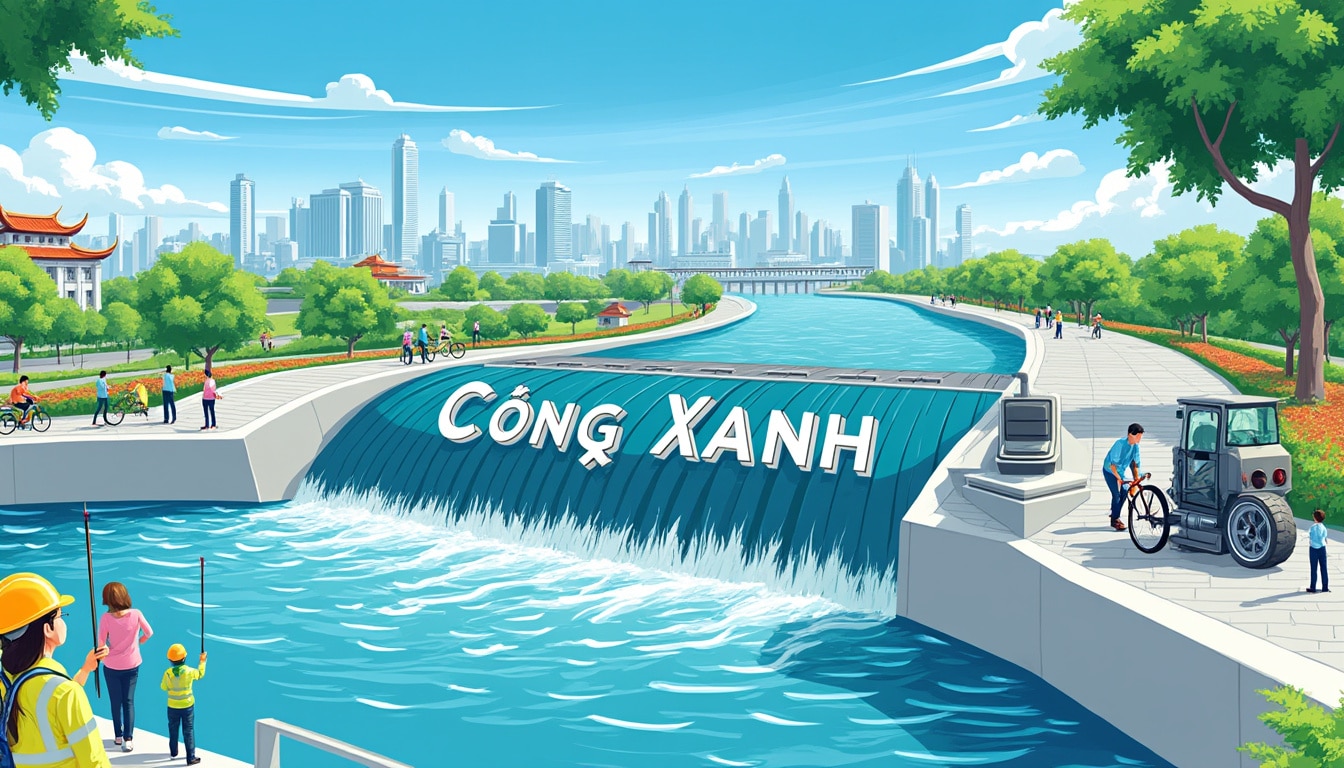
- 📊 Implementation of modern drainage systems.
- 💧 Construction of floodwater holding reservoirs.
- 🌳 Promotion of green urban spaces to absorb rainfall.
- 🏗️ Reinforcement of existing infrastructure to withstand floods.
The collaboration between government bodies and private firms like AquaBarrier Solutions and SafeHaven Flood Defense highlights a comprehensive approach to addressing flooding in Hanoi. These partnerships focus on both immediate solutions and long-term planning, ensuring the city remains resilient in the face of growing natural challenges.
The concerted efforts to manage Hanoi’s natural risks not only focus on physical infrastructure but also emphasize community education and awareness. Residents are regularly informed about potential flood risks and appropriate emergency responses, underlining the importance of individual preparedness in disaster management.
Environmental Impact of Floods on Hanoi’s Urban Areas
Flooding is not just a physical inconvenience; it has extensive environmental impacts, particularly in urban areas like Hanoi. One of the immediate effects of floods is water pollution, as floodwaters often carry waste and hazardous materials from overflowing sewage systems, industrial areas, and agricultural lands into residential neighborhoods. This does not only pose health risks but also affects local ecosystems, causing harm to plant and animal life.
- 🗺️ Contamination of freshwater sources.
- 🐟 Disruption of aquatic life in rivers and lakes.
- 🌿 Damage to urban vegetation and green spaces.
The environmental repercussions extend beyond pollution. Frequent and severe floods lead to soil erosion, which can severely alter the topography of affected areas. In urban settings, this erosion can undermine the foundations of buildings, roads, and other infrastructures, leading to long-term economic challenges.
There’s also a notable impact on air quality following floods. The water damage from floods often leads to increased mold and mildew, which can release spores into the air. This exacerbates respiratory issues among the population, particularly affecting vulnerable groups such as children and the elderly.
To address these concerns, initiatives like GreenFlood Innovations have emerged. Their focus is on integrating environmental considerations into flood management plans, ensuring that flood control efforts do not exacerbate environmental degradation. Strategies such as promoting the growth of mangroves along riverbanks and the use of bio-engineering techniques to stabilize soils play crucial roles in minimizing the environmental impacts of floods.
Integrating technology into environmental management is also crucial. Technological advances allow for real-time monitoring of environmental factors, enabling quicker responses and more precise adjustments to flood management practices. As such, the role of UrbanFlood Prevention cannot be overstated in creating a sustainable urban future for Hanoi.
Advanced Technologies in Flood Risk Management
The 21st century has brought about technological innovations that are transforming how cities like Hanoi manage natural risks such as floods. Leveraging modern technology, flood risk management in Hanoi has advanced significantly, providing more efficient and effective solutions to previously insurmountable challenges.
One significant technological advancement is the integration of machine learning and remote sensing technologies, spearheaded by companies like HydroShield Corporation. These technologies enable accurate prediction of flood events, allowing for timely deployment of resources and evacuation plans. By analyzing large datasets from various sources, authorities can identify patterns and trends that contribute to flooding, leading to more informed decision-making processes.
- 🤖 Utilization of machine learning algorithms for flood forecasting.
- 🌐 Deployment of sensor networks across at-risk areas.
- 🛰️ Use of satellite imagery for real-time monitoring.
Another technological stride is the enhancement of urban infrastructure through smart systems. FloodSafe Solutions is leading the way in developing intelligent drainage systems that adjust based on weather patterns and water levels. These systems optimize water flow and reduce the risk of blockages, thus minimizing flood damage.
In addition to smart infrastructure, simulation technologies are employed to model potential flood scenarios. This provides valuable insights into how different factors interact during a flood, enabling planners to devise more robust flood management strategies. The real-time data produced can guide the strategic allocation of resources, ensuring that high-risk areas receive the necessary attention ahead of time.
These innovations are not limited to prediction and infrastructure but also include community-focused solutions. For instance, mobile applications have been developed to provide real-time alerts and safety instructions to residents. This empowers citizens to be proactive in flood preparedness, ensuring that they can respond quickly and effectively when necessary.
Community Involvement in Flood Risk Reduction
While technology and infrastructure play critical roles in flood risk management, community involvement is equally vital. In Hanoi, fostering a sense of community responsibility has been a key strategy in handling flood risks. This involves educating the public on the importance of flood preparedness and encouraging active participation in disaster risk reduction initiatives.
- 📚 Educational programs in schools and community centers.
- 🧑🤝🧑 Volunteer groups for flood response efforts.
- 🔊 Public awareness campaigns through media.
Community-led initiatives have proven successful in several neighborhoods, where local volunteer groups play crucial roles during flood events. These groups assist in distributing emergency supplies and help coordinate evacuation efforts, acting as vital links between residents and official authorities. Moreover, their local knowledge often leads to more efficient responses in emergencies.
Hanoi also encourages residents to participate in the planning and execution of flood risk reduction measures. Residents often provide insights and suggestions during public consultations, allowing for more inclusive and adaptive planning processes. This collaborative approach has fostered a strong partnership between the government and the community.
The success of these initiatives is further bolstered by support from organizations focusing on community resilience, such as Natural Risk Strategies. These organizations provide training and resources needed for effective community engagement in disaster risk reduction, empowering locals to take initiative in safeguarding their neighborhoods against floods.
The Road Ahead: Future Prospects for Hanoi’s Flood Management
As Hanoi continues to evolve, so do its challenges in managing natural risks like flooding. The path forward involves a combination of technological advancements, infrastructure improvements, and community engagement. With the integration of comprehensive flood management strategies, Hanoi aims to enhance its resilience against increasing climate change impacts.
Future prospects focus on developing adaptable systems that anticipate the unpredictable nature of climate change. GreenFlood Innovations envisions a future where urban planning incorporates climate-responsive designs. This includes more green spaces, permeable surfaces, and adaptive architecture to harmonize urban living with natural processes.
- 🌍 Implementation of climate-adaptive urban planning.
- 🏢 Construction of flood-resistant housing.
- 🛠️ Investment in cutting-edge flood management technology.
Hanoi’s government also plans to expand its collaboration with international partners and research institutions to benefit from global expertise in flood risk management. By sharing knowledge and resources, Hanoi can adopt best practices and integrate innovative solutions faster and more effectively.
The commitment to improving flood management in Hanoi is unwavering. Efforts by stakeholders across all sectors, from governmental bodies to private corporations and community groups, are vital in crafting a sustainable future for the city. With continued investment and innovation, Hanoi is poised to become a model city for flood resilience and environmental stewardship. This proactive approach ensures that the city not only addresses current challenges but also prepares for the uncertainties posed by future natural phenomena.
Frequently Asked Questions
- What causes frequent flooding in Hanoi?
- How does flooding impact Hanoi’s environment?
- What technologies are used in flood management in Hanoi?
- How can residents contribute to flood management?
- What are Hanoi’s future plans for flood resilience?

The city of Hanoi, a bustling hub of culture and history, offers a distinctive climate that shapes its daily life. Nestled in the heart of Vietnam, Hanoi experiences a variety of weather conditions, from humid summers to mild, dry winters.…

Hanoi, the vibrant capital city of Vietnam, not only captivates visitors with its rich cultural heritage and delectable street food but also with a unique climatic variation that sees the city shivering under cold weather conditions during certain months of…

As the summer sun climbs higher in the sky, the bustling streets of Hanoi transform under the play of light and shadow, painting a vivid tableau of life in Vietnam’s dynamic capital. Known for its rich cultural heritage and vibrant…

Hanoi, the vibrant capital of Vietnam, is renowned for its rich history, tantalizing street food, and intriguing blend of traditional and modern cultures. However, one of the most defining yet challenging aspects of living or traveling in Hanoi is its…
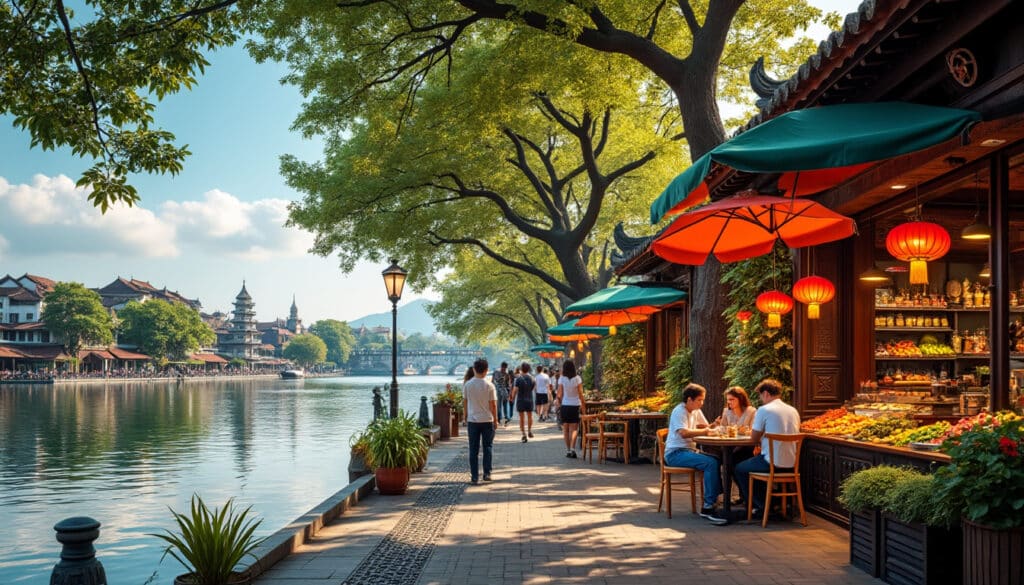
Is Hanoi warm throughout the year?
Hanoi, the vibrant capital of Vietnam, showcases a spectrum of weather conditions throughout the year, thanks to its unique geographic location. Encompassing the vivacious street life and the rich history of the city, understanding its climate is essential for both…
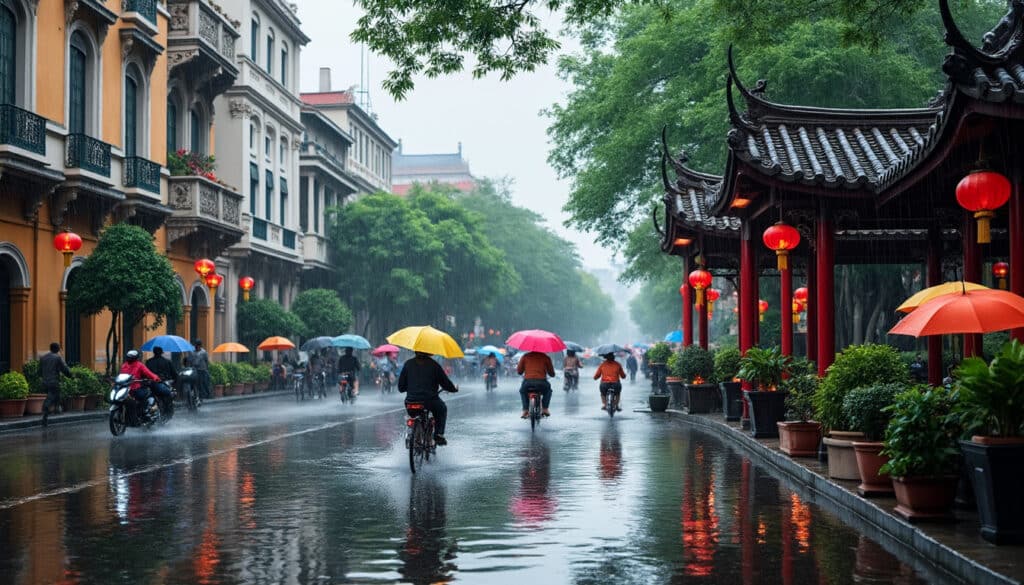
Rain and precipitation in Hanoi
Renowned for its vibrant streets, exquisite cuisine, and rich cultural history, Hanoi, the bustling capital of Vietnam, also presents weather patterns worth exploring. The city’s climate plays a crucial role in shaping its everyday life and the experience of both…

Hanoi, the captivating capital of Vietnam, is a place where the past seamlessly merges with the present. This city offers a unique blend of rich history, vibrant culture, modernity, and a distinct four-season climate, making it an exciting destination for…
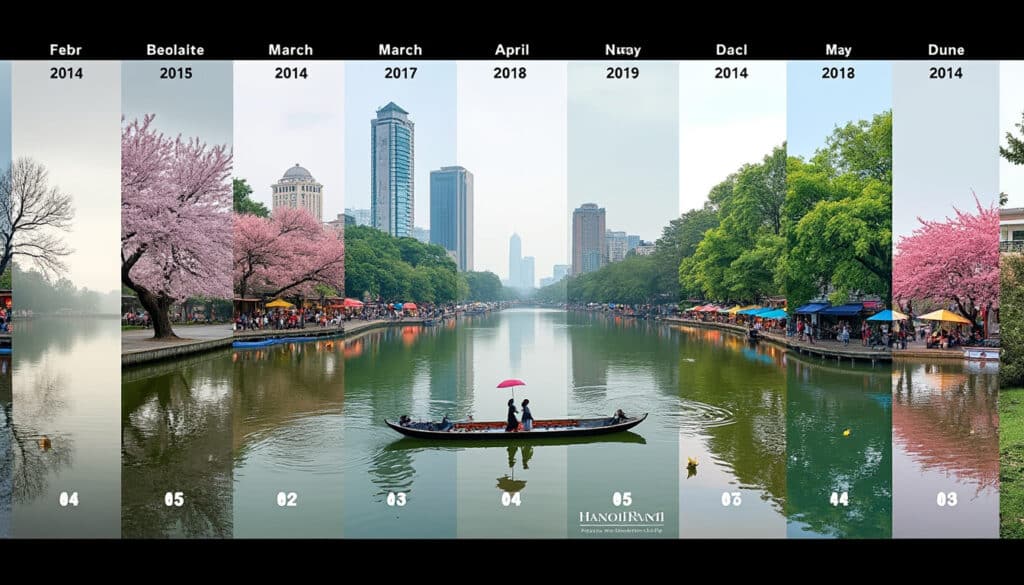
Hanoi, the vibrant capital city of Vietnam, is known for its unique weather patterns that change remarkably over the months. Whether it’s the cool breeze whispering through Hoan Kiem Lake in January or the heavy rains nurturing tropical greenery in…

What is the weather like in Hanoi?
Hanoi is known for its vibrant street life, rich history, and diverse cuisine. Yet, understanding its weather patterns is crucial for enjoying all the city has to offer. Hanoi’s climate is characterized by hot, humid summers and cool, dry winters,…




